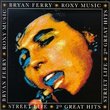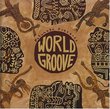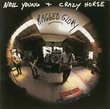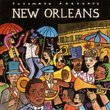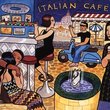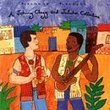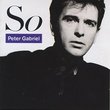| All Artists: Lars Ulrik Mortensen, Aloysia Assenbaum, John Holloway Title: Biber: Unam Ceylum /Holloway * Assenbaum * Mortensen Members Wishing: 0 Total Copies: 0 Label: ECM Records Release Date: 9/24/2002 Genre: Classical Styles: Chamber Music, Historical Periods, Baroque (c.1600-1750), Classical (c.1770-1830), Instruments, Strings Number of Discs: 1 SwapaCD Credits: 1 UPCs: 028947208426, 0028947208426 |
Search - Lars Ulrik Mortensen, Aloysia Assenbaum, John Holloway :: Biber: Unam Ceylum /Holloway * Assenbaum * Mortensen
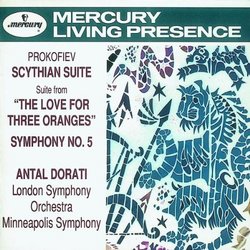 | Lars Ulrik Mortensen, Aloysia Assenbaum, John Holloway Biber: Unam Ceylum /Holloway * Assenbaum * Mortensen Genre: Classical
Biber was a violin virtuoso and kapellmeister, whose music continues to fascinate and, often, amaze. His set of "Biblical Sonatas" has long been a favorite of Baroque specialists. Here, Baroque violinist John Holloway resc... more » |
Larger Image |
CD DetailsSynopsis
Amazon.com Biber was a violin virtuoso and kapellmeister, whose music continues to fascinate and, often, amaze. His set of "Biblical Sonatas" has long been a favorite of Baroque specialists. Here, Baroque violinist John Holloway rescues other Biber sonatas from undeserved obscurity. The disc includes two unpublished sonatas and four from Biber's 1681 collection that cemented his position among his contemporaries. All of the works are full of dazzling technical effects and unexpected turns. The F Major Sonata, for example, balances attractive melodies with an abundance of surprises, both musical and technical, and concludes with a grand chaconne capped by a whirlwind finish. Holloway is equal to the significant demands Biber imposes on his soloist. He's accompanied by both harpsichord and organ, whose weighty presence thickens the textures. An exciting foray into Baroque extravagance. --Dan Davis Similarly Requested CDs
|
CD ReviewsSprezzatura in musica Michael S. Swisher | Stillwater, Minnesota USA | 04/28/2003 (5 out of 5 stars) "Heinrich Ignaz Franz Biber von Bibern - to give him his correct name and style - was one of the most virtuosic and also most idiosyncratic composers of the Baroque period. Although he wrote masses, motets, and opera, he is especially noted for his works for violin, and was remembered decades after his death as a great executant, much as we today remember Paganini. This recording is of some of the earlier Biber sonatas for solo violin, less well known than the Rosary Sonatas or his later collection, Fidicinium sacro-profanum. In addition to four published in 1681, two previously unpublished sonatas (Nos. 81 and 84) are included, and the last (band 6) on this recording is the only performance on record of No. 84 of which I am aware. It alone is worth the purchase of the album, even if one already has another recording of some of the other pieces on it. "Baroque" is a characterisation of music of this period that damns with faint praise, being derived from a Spanish word for an imperfect pearl. It would be better to speak of the style - especially in Biber's case - as a musical version of mannerism. Biber combines, as did the mannerist painters, a highly formal character with exaggerations and violent contrasts, all delivered in what seems to be an effortless flow of song. The appearance of naturalness and ease in doing what is in fact dauntingly difficult was esteemed during this period as the paramount virtue of an artist - or of a gentleman. The Italians called it "sprezzatura." Biber has it, as did his fellow Salzburger, Wolfgang Amadeus Mozart (who knew and quoted Biber's work). Listening to this music at one moment you may be reminded of a country fiddle tune, next of "Zigeunerweisen," and after that, all the pomp of a seventeenth-century court. Finally a simple heartfelt melody breaks through. In the few short minutes that each of these sonatas last, Biber communicates a density of information that one can't find in some later composers' symphonies of far more elaborate instrumentation and much greater length. Holloway's performance of these pieces is polished without losing the freshness of spirit they properly convey. The liner notes say that the artist plans to record a second disc with more of the 1681 sonatas. Based on this one, it should be well worth having." 6 stars... one of my all-time favourite cds of any kind of m another reader | 11/19/2005 (5 out of 5 stars) "Yes Manze/Romanesca does an excellent recording & did a lot to put Biber 'on the map' but I just "like this one better." (esp sonata IV!!!) Holloway's recordings are the only ones that have both organ and harpsichord playing in the background & I really like the effect. Usually there's only one or the other. As another reviewer said, it's hard to notice that this is very hard music to play. I wouldn't say it has anything to do with the skill of the musicians, but the harpsichord & organ workng together makes the cd more atmospheric for some reason. These discs (this one + Der Turken Anmarsch) don't have the Sonata Representativa on them like Romanesca's do, but then they have unpublished works by Biber. So the only way to hear everything is to get both recordings, which isn't a bad idea anyway so then you can compare the two interpretations. Generally speaking I would say this cd is good for the evening/nighttime & Romanesca's is for morning/daytime. That's what I think of anyway." This is the one Biber. Soledancer | New York | 06/19/2004 (5 out of 5 stars) "Absolutely intoxicating: I listened to many of the Manze recordings of baroque violin as well as other highly rated performances in this genre but find myself coming back again and again to this CD. If you can only buy one Biber, this is the one!"
|

 Track Listings (6) - Disc #1
Track Listings (6) - Disc #1